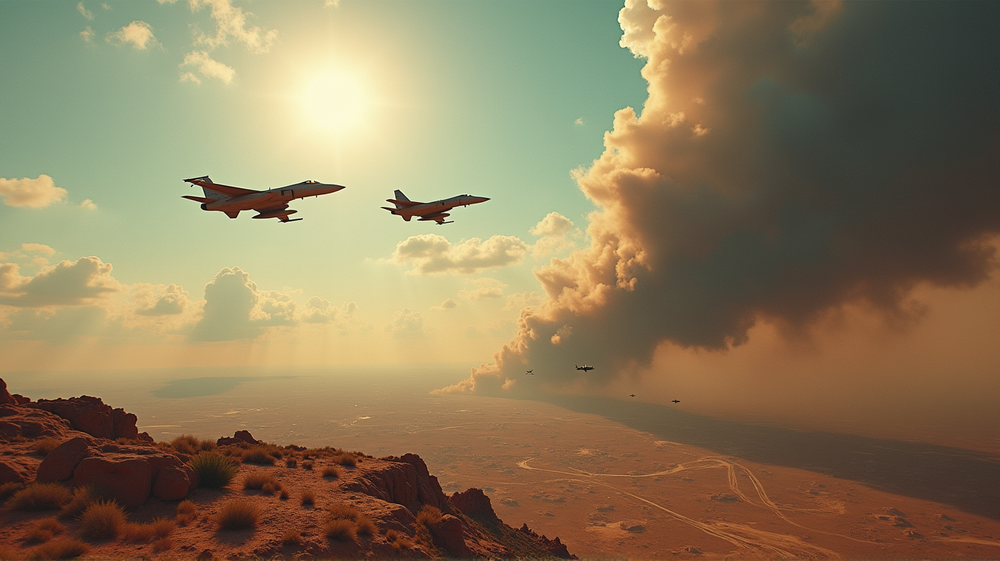In a bold and controversial move, President Donald Trump declared that Iran’s primary nuclear enrichment facilities had been “completely and totally obliterated.” These unprecedented U.S. airstrikes, targeting the nuclear sites at Fordo, Natanz, and Isfahan, mark a historic escalation in tensions, as articulated in Trump’s address from the White House alongside notable officials.
The Strike Unveiled
On a typically serene Saturday evening, a storm of strategic maneuvers was set into motion. Trump’s announcement on Truth Social at 7:50 p.m. ET followed by a powerful speech, showcased his typical rhetoric of strength—”There will be either peace or there will be tragedy,” he stated emphatically, setting the tone for what was to follow. Alongside him were Vice President JD Vance and other senior officials, affirming a united front.
Simultaneously, U.S. Navy submarines launched 30 Tomahawk missiles, reinforcing the gravity of these actions. According to NBC News, there remains a cloud of uncertainty over the actual damage inflicted as reports couldn’t independently confirm Trump’s claims.
The Gamble of Military Action
This decision to launch an attack on Iranian soil represents a calculated risk. Trump’s administration seems to believe that such a move will serve as a deterrent, signaling a readiness to push Iran toward diplomatic negotiations. This aligns with a broader strategy to prevent Iran from progressing toward nuclear armament, albeit at the cost of raising the “risk of war dramatically,” as House Minority Leader Hakeem Jeffries pointed out.
Still, Trump’s gamble hinges on precise execution: either dial back Iran’s nuclear capabilities significantly or usher in a new era of entangled Middle Eastern conflicts, with potential repercussions worldwide.
Strategic and Political Reactions
Mixed reactions from political arenas paint a complex picture. While Republicans like Senator Lindsey Graham celebrated the boldness of Trump’s decision, Democrats, including Hakeem Jeffries, criticized the lack of congressional authorization and foresightedness. Even voices from previous administrations, such as Tommy Vietor, foresee a shadow of unpredictable retaliations brewing from Tehran.
Focus on the Fordo Stronghold
Fordo emerged as a central theater—deep under the Iranian mountains, requiring advanced weaponry like the GBU-57 Massive Ordnance Penetrator. This detail emphasizes the severity and specificity of the operation. As B-2 stealth bombers mobilized from Missouri, indications of this strike being a well-orchestrated maneuver became clear.
Winds of Change: Israel and Beyond
Notably, the decision arcs across Israeli corridors of power. Initially doubting Israel’s calls for immediate action, Trump eventually provided tacit support post-consultations with military brass. Such shifts highlight a hardened stance against perceived threats, set within the larger saga of Middle Eastern geopolitics.
As the reverberations of these actions unfold, the world watches to see how Tehran will react. Questions loom about potential retaliations, possibly targeting U.S. or allied forces in strategic locales like the Persian Gulf or Strait of Hormuz, with global economy implications.
Conclusion: Toward Uncertain Futures
While Trump vies for “peace through strength,” the question remains: will Iran acquiesce to diplomatic overtures under pressure, or will a new chapter of conflict commence? The delicate balance in this geopolitical theatre holds implications far beyond immediate borders, shaping narratives in uncertain times as the quest for stability persists.













